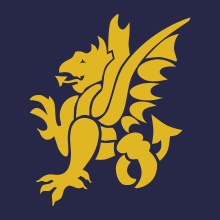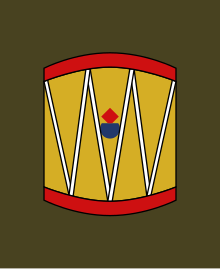
The 43rd (Wessex) Infantry Division was an infantry division of Britain's Territorial Army (TA). The division was first formed in 1908, as the Wessex Division. During the First World War, it was broken-up and never served as a complete formation. It was reformed in the TA in 1920, and then served in the campaign in North West Europe from June 1944 until May 1945, during the Second World War. The division suffered heavy casualties and gained an excellent reputation. After the Second World War, the division formed part of the postwar TA, and became the 43rd (Wessex) Division/District in 1961. It was finally disbanded in 1967.
The 130th Brigade, originally the Plymouth Brigade was an infantry formation of Britain's Volunteer Force, Territorial Force, and later Territorial Army (TA). In the First World War the brigade was in British India for most of the war and did not see service as a complete formation, but many of its battalions fought in the Middle East campaigns. The brigade did see action during the campaign in North West Europe of the Second World War, distinguishing itself at actions such as Operation Jupiter, the capture of Mont Pinçon, Operation Market Garden, at 'Dorset Wood' and at Hengelo. As 130 Brigade it continued in the postwar TA until 1961.

The Middlesex Yeomanry was a volunteer cavalry regiment of the British Army originally raised in 1797. It saw mounted and dismounted action in the Second Boer War and in World War I at Gallipoli, Salonika and in Palestine, where one of its officers won a Victoria Cross at the Battle of Buqqar Ridge and the regiment rode into Damascus with 'Lawrence of Arabia'. Between the world wars the regiment was converted to the signals role and it provided communications for armoured formations in World War II, including service in minor operations in Iraq, Palestine, Syria and Iran, as well as the Western Desert, Italian and North-West European campaigns. It continued in the postwar Territorial Army and its lineage is maintained today by 31 Signal Squadron, Royal Corps of Signals, which forms part of the Army Reserve.
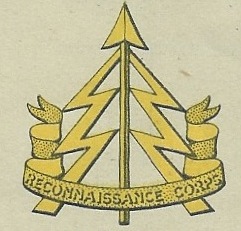
The 43rd (Wessex) Reconnaissance Regiment was a regiment of the British Army's Reconnaissance Corps, itself part of the Royal Armoured Corps, during World War II. It fought in North West Europe with the 21st Army Group in 1944–1945. Throughout most of its existence the regiment was part of the 43rd (Wessex) Infantry Division.
Lieutenant-Colonel Francis Gordon Ward Lane Fox, was a British Army officer and prominent Yorkshire landowner.

55th (Wessex) Field Regiment was a unit of the Royal Artillery in Britain's part-time Territorial Army (TA). Its origin was a brigade organised in 1927 from the former West Somerset Yeomanry and field batteries from Wiltshire. Just before the outbreak of World War II the Wiltshire elements were separated to form a second regiment, after which the 55th (Wessex) was often referred to simply as the West Somerset Yeomanry (WSY). It served in Home Forces for the first part of the war, but in 1942 it was assigned to the Guards Armoured Division and served with that formation throughout the campaign in North West Europe, from Normandy to the German surrender in 1945. It continued as an artillery regiment in the postwar TA until 1967.
The 1st Lancashire Engineer Volunteer Corps was a Volunteer unit of Britain's Royal Engineers, first raised in 1860. It went on to spin off a unit of fortress engineers and provided a signals training centre during World War I. Its successor units provided signal support for West Lancashire Territorial Army (TA) formations in the early stages of World War II, and for Eighth Army HQ during the Second Battle of El Alamein, the advance to Tunis, invasion of Sicily and through Italy, ending the war in Austria. Postwar successor units have continued in the TA and Army Reserve to the present day.
The 1st Somersetshire Engineers was a volunteer unit of Britain's Royal Engineers (RE) whose history dated back to 1868. As the engineer component of the 43rd (Wessex) Division, the unit served in both World Wars, distinguishing itself at the assault crossing of the River Seine at Vernon in August 1944 and in the doomed attempt to relieve the 1st Airborne Division at Arnhem. A detachment also served as airborne engineers in Sicily, Italy and at Arnhem. Their successors served on in the Territorial Army until 1967.

The 7th Signals Regiment was a regiment of the Royal Corps of Signals within the British Army. The unit and its predecessors supported 1st (British) Corps from 1911 until the end of the Cold War. Afterwards the regiment supported the Allied Rapid Reaction Corps until its disbandment in 2012.
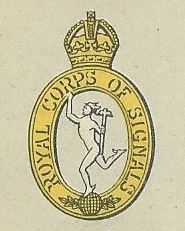
1st Armoured Division Signals was a unit of Britain's Royal Corps of Signals providing communications for the 1st Armoured Division during the Second World War. It was present during the Battle of France, the Western Desert Campaign, including the battles of Gazala and Alamein, the Tunisian Campaign, and the Battle of Coriano during the Italian Campaign.

42 Signal Regiment was a Territorial Army unit of the British Army's Royal Corps of Signals. It had its origins in a Volunteer unit of the Royal Engineers formed in Manchester during the Second Boer War. It provided the divisional signals for the 42nd Division and 66th Division in both World Wars, and its successor continues in the Army Reserve as a Signal Troop in Manchester.
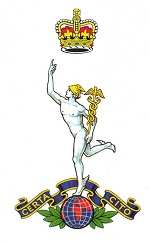
44 Signal Regiment was a Territorial Army (TA) unit of the British Army's Royal Corps of Signals. It had its origins in a Volunteer unit of the Royal Engineers (RE) formed in the 1890s. It provided the divisional signals for the 44th Division and its duplicates in both World Wars, also seeing active service with 28th Division in the First World War. Its successor continued in the postwar TA and Army Reserve.

50 (Northumbrian) Signal Regiment was a Territorial Army (TA) unit of the British Army's Royal Corps of Signals. It had its origins in a signal company and a cyclist battalion formed in 1908 and it provided the divisional signals for the 50th (Northumbrian) Division and its duplicates during World War II. Its successors continued in the postwar TA until 2009.

The 94th Light Anti-Aircraft Regiment, Royal Artillery, was an air defence unit of the British Army during World War II. Initially raised as an infantry battalion of the King's Own Yorkshire Light Infantry in 1940, it transferred to the Royal Artillery in 1941. It served with Guards Armoured Division in Normandy and through the campaign in North West Europe until VE Day.

The City of London Signals was a Territorial Army unit of the British Army's Royal Corps of Signals. It had its origins in a signal company of the Royal Engineers formed in 1908 and during World War II it provided the divisional signals for the 56th (London) Division and its duplicates as well as communications for the Royal Air Force in the Middle East. Its successors continued in the postwar Territorial Army and Army Reserve until 2016.

The 110th Light Anti-Aircraft Regiment, Royal Artillery, was an air defence unit of the British Army during World War II. Initially raised as an infantry battalion of the Dorsetshire Regiment in 1940, it transferred to the Royal Artillery in 1942. It served with 43rd (Wessex) Infantry Division in Normandy and through the campaign in North West Europe until VE Day.

The 1st Wiltshire Battery, Royal Field Artillery, and its successors were part-time Territorial Force units of the British Army from 1908 to 1950. It carried out garrison duties in India during World War I and saw active service in the Third Afghan War. It served in various units in the interwar years, finally becoming a full regiment in time for World War II. It saw action with 43rd (Wessex) Infantry Division in the campaign in North West Europe, including Operations Epsom, Jupiter and Bluecoat in Normandy, the crossing of the Seine, the battle for Arnhem in the Low Countries, and then Operations Clipper, Blackcock, Veritable and Plunder across Germany. Its short-lived postwar successor unit had little or no Wiltshire connection.

The 179th Field Regiment was a unit of the Royal Artillery, formed by the British Army during World War II. First raised in 1940 as infantry of the Worcestershire Regiment, after serving in the garrison of Iceland it was converted to the field artillery role in 1942. It fought with 43rd (Wessex) Division in the campaign in North West Europe. It was disbanded after the war.

The 9th Medium Regiment was a Royal Artillery unit, formed in the British Army during World War II. First raised in 1940 as infantry of the Buffs, it was converted to the medium artillery role in 1942 and fought in the campaign in North West Europe. It was disbanded after the war.

The 11th Medium Regiment was a Royal Artillery unit, formed in the British Army during World War II. First raised in 1940 as infantry of the Essex Regiment, it was converted to the medium artillery role in 1942 and fought in the campaign in North West Europe. It was disbanded after the war.



